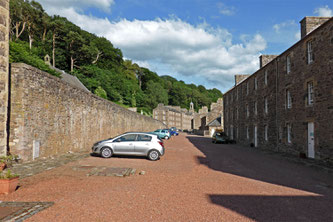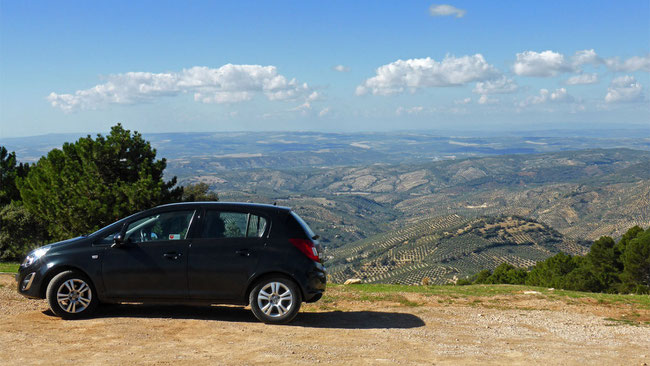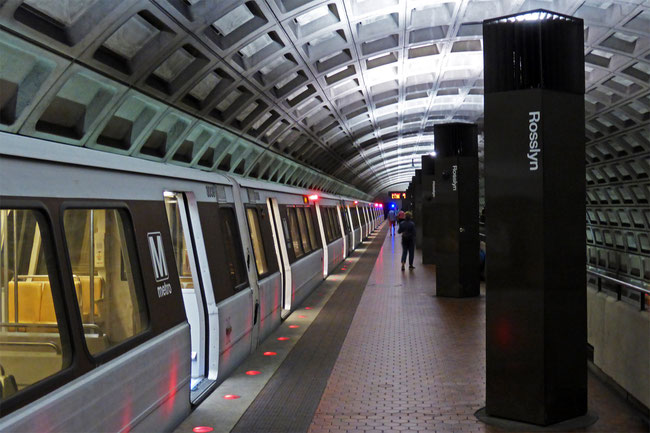The good & bad of car travel

There’s lots of options for getting around as you travel, ranging from walking to flying in an aeroplane, and one of those options is to travel around in a car that you drive yourself.
Depending on your experience and background you may consider a car as the only, or at least preferable way to get around, or you may eschew cars as travelling transport altogether.
In fact, there are both advantages and disadvantages to travelling in a car, depending on the circumstances of your travel. Sometimes they’re the best way to get around and sometimes they’re not; and it’s worth giving them some thought as you travel.
The advantages
Right at the top of the list of advantages is that, if you are driving around in your own car, it’s cheap: you’ve already paid for your means of transport and you just have to pay for your fuel (and maintenance, insurance, registration, parking, and tolls…). Even if you’re not in your own car, hiring a car (or even using a taxi) is still commonly the cheapest way to get around if you are travelling in a small group, and are sharing the costs.
This is especially so in some first-world countries that have expensive public transport, like the United Kingdom or the United States. We needed to travel from Newark Airport, New Jersey, to Pennsylvania for a stay at an Amish farm in Lancaster County, and we knew that we would need a car to get around while we were there. I researched catching the train to Lancaster County and hiring a car when we got there, but just the three one-way train fares were going to cost nearly as much as hiring a car for the whole visit!
Car-travel flexibility
Cars are convenient (with some caveats, mainly about parking) as you can go just where you want to as long there’s a road, and you can go when you want to, with no concern over coordinating your plans with transport timetables. And there are some places that public transport, even taxis, just don’t go.

Carrying your stuff
You can easily carry a lot more gear when you have a car, and you don’t have to be quite so obsessive about keeping it all packed away, neat and inaccessible. You can also store some of that gear in the car if you don’t need it immediately, rather than hauling into your accommodation every night. Carrying a lot of gear isn’t a good principle for travel, and it can be a trap, but it sure can be convenient for a while.
Getting around quickly
Cars are commonly the fastest way to get around, too, especially when compared to short-distance local public transport on busses, trams, and trains. They can even beat aeroplanes over short flight distances, when you take into account the time taken to get to the airport; getting to the airport early to get through security, baggage check-in and boarding; waiting to collect checked in baggage after the flight; and then the time taken to get from the airport to your real destination.
The disadvantages
Navigation
Cars have their disadvantages, too. You have to work out where you are going and how to get there in great detail when you are driving, rather than just making sure that you get on the right bus, train, or plane, and then sitting back and relaxing while leaving everything up to the driver.
Navigation apps and GPS navigators do make this task easier for drivers, but you need to make sure that you get it right. Even if you take the greatest care with your navigation things can still go badly wrong.
For example: when driving in Iceland we relied on a GPS navigator to find our way around, although we also cross-checked our route on a paper map. Despite our diligence, we ended up on the infamous route 52, which took us up onto an isolated high plateau along a road that progressively deteriorated and got icier until our little hired Toyota Auris (Corolla in Australia) started dragging its belly along the ice ridge in the middle of the road. This is what the road looked like:
There was some great scenery on that alpine plateau, but it’s hard to enjoy it when there’s a possibility that you may freeze to death if you get stuck! Obviously we survived this, and with nothing more consequential that an inconvenient late arrival at our accommodation. I’ve blogged about this trip here.
Of course, even on public transport you still need to do some navigation to find you destination, but it’s usually relatively simple.
Driving internationally
If you’re driving internationally, you will also have to come to terms with different road rules, road signs in a language that you don’t understand, and different driving and road design culture (a subtle thing). You may also have to come to terms with driving on the opposite side of the road while seated on the opposite side of the car than what you’re used to. (This isn’t too hard in practice, but it’s best not to try it for the first time in a big foreign city or on freeways, and avoiding manual transmission is a good idea, too.)
Parking the car
Finding, and paying for, parking for a car can be a big and expensive hassle that you won’t have with public transport, especially in a big town or city, and pretty much anywhere in England.
Liability
Your potential liability is a big down-side to using a car. While it’s possible to accidentally injure someone or damage property at any time, being in charge of a car makes it far too easy – a second of inattention watching the sights as you drive may see you run straight into the back of that Ferrari in front of you. With a car you can find yourself responsible for severe injuries or even the death of another person, and very expensive damage to property.
You can insure yourself against these risks, but you may still find yourself held criminally responsible, and, if you are in a foreign country, may find yourself involved in a very complicated bureaucratic process with a bureaucracy that may not be very efficient, honest, or that speaks your language.
It’s unromantic
Travelling in a car can feel mundane – commuting around in cars is something that you’ve probably done for most of your life, so the feel of it just doesn’t feel like the romance of travel. Travelling in a car really leaves you feeling disconnected from what is going on around you, and too much like you’re at home in your normal routine.
Missing out on mixing with the locals
If you stick to cars, you’ll miss out on using public transport in a foreign land – there’s nothing like public transport to give you a connection with the local populace: crammed into a bus, tram, coach or train with them, seeing how they interact, and getting some experience of how they live their lives. It’s like boarding a train in Mexico and having to convince someone, using pantomime because you don’t speak their language, that the seat next to them, occupied by their chickens, is your seat. Or watching a man on the New York Metro presenting a spiel hawking pirate DVDs to the entire carriage (car) in several different languages. On the other side, there’s also having the child in the bus seat behind you throw up on a twisting mountain road in the Parque Nacional de Sierra Nevada, in Spain. Really, sometimes public transport is unintentional street theatre, both good and bad, but always interesting!
Safety
Travelling in a car also exposes you to some interpersonal safety risks because you can become relatively isolated; risks such as: road rage, official corruption, car-jacking and police impersonators.
The multiple joys of transport
All of this results in me experiencing two contradictory feelings of joy about transport at different times when travelling.
One of these is the joy of the freedom of collecting a hire car after using public transport for a while, and then heading off without having to consider timetables, departure points, how well anyone runs their transport business, and how to coordinate busses, trains, taxis, and long walks with luggage to get me to where I want to go.
The other joy is that of getting rid of the hire car, and jumping onto a bus or train and leaving behind the responsibilities of driving and looking after the car, and leaving the worries of navigating, dealing with other road users, and parking, to somebody else – I just sit in the bus and look out the window!
Choosing to travel in a car
Personally I prefer not to drive a car where possible. This is mainly because, after decades of my life driving to and from work, the shops, and anywhere for leisure pursuits, it feels too mundane, which takes away some of the special feeling of being a traveller. But sometimes travelling in a self-driven car is the best option, and I know that some people are so used to driving a car that that is all they want to do – just give some thought to your options!.
Hiring a car
If you’re travelling in a car in your own country then chances are you’re travelling in your own car. But if you are travelling internationally, or to a more distant destination in your own country, then leaving your own car at home and hiring one when you get there by aeroplane, boat, or train is likely to be the only, or at least the best, option. You can find out about hiring a car in another post, here.
Disclaimer
I’ve based this commentary on my personal experiences, circumstances, and impressions, and my limited research on travelling in a car – it isn’t the result of an exhaustive study about travelling in a car. It may not apply to you, or your circumstances.
Over time, the things that I say here may become out of date, and, while I’ll correct anything I know is wrong, I’m not going to be excessively conscientious about ensuring that it is current. So, treat this commentary as a great place to start, but do your own research and confirm everything that you read here before deciding to travel in a car (on not)!
Share this The Journey and the Destination page using your favourite social media:
Would you like to add something, or ask a question? Add a comment below (you can leave the 'Website' field blank):




